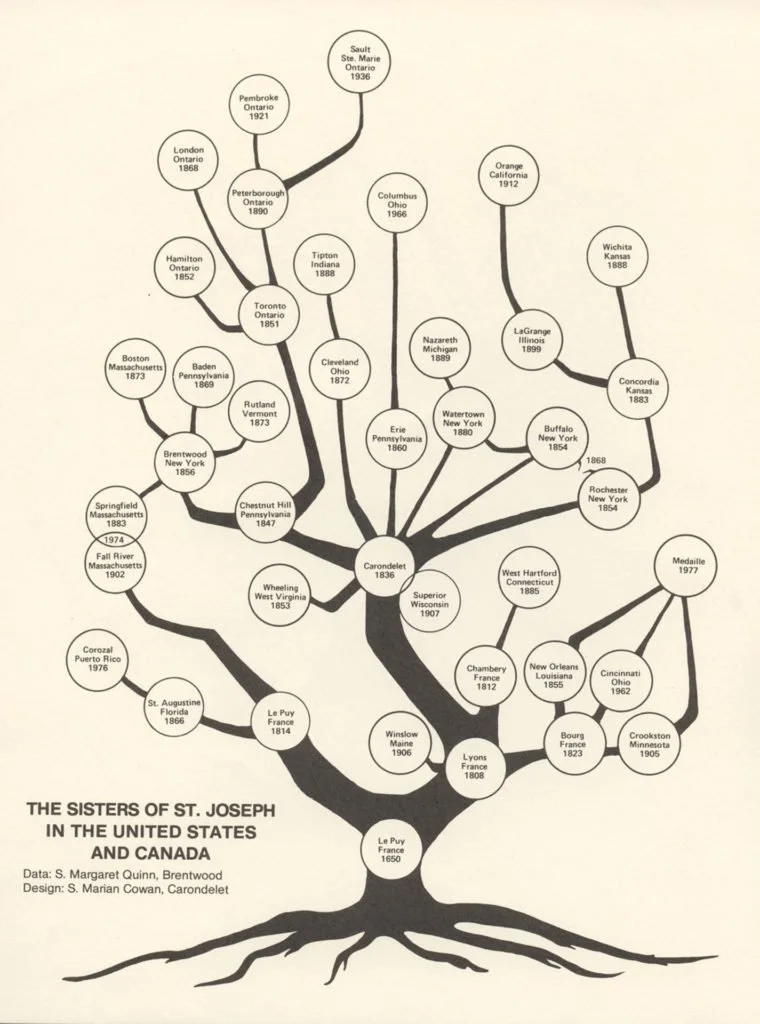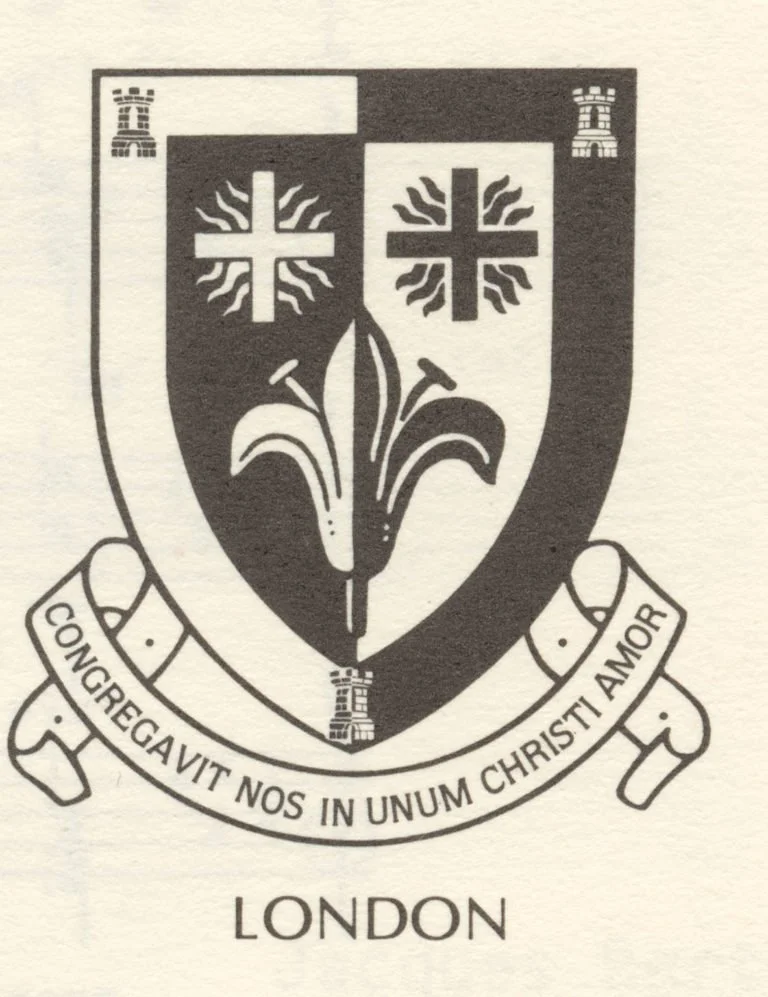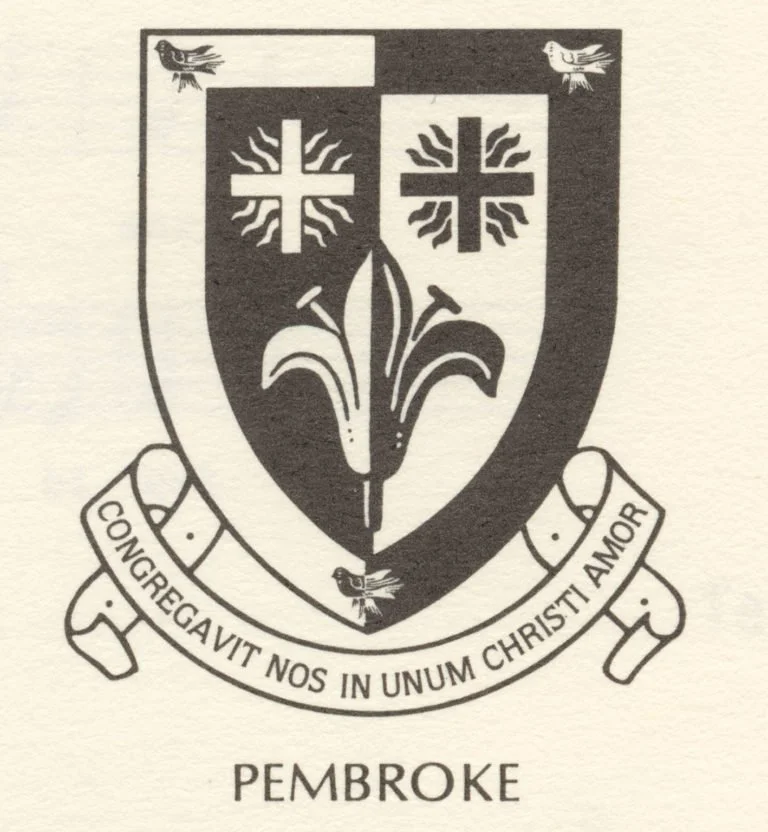Our Early History
The story begins long ago, across an ocean, in France. Thirty years of war (1618 – 1648) had left widows and orphans living with poverty and disease. During this time, religious orders lived apart from others and were only open to those who gave money, land or goods to the orders.
Father Jean Pierre Médaille S.J.
A Jesuit priest, Father Jean Pierre Médaille S.J. wanted to change this. On October 15, 1648, he gathered six women together in Le Puy-en-Velay, France. The women were Françoise Eyraud, Clauda Chastal, Marguerite Burdier, Anna Chaleyer, Anna Vey and Anna Brun. They founded a religious institute on feast of St. Theresa of Avila, October 15, 1650 in Le Puy. On the feast of St. Theresa of Avila, October 15, 1650, the religious institute known as the Congregation of the Sisters of St. Joseph was founded in Le Puy.
Father Medaille’s ideas were known as the Little Design. The community formed small groups, took simple vows, dressed and lived simply, owned no property, and made lace to support themselves. They worked among ordinary people rather than being cloistered, and opened their community to everyone regardless of social class. They believed that service to their dear neighbor, their own salvation, and unity with God were interconnected. Their goal was to “divide the city, seek out its ills, and cure them.” The Sisters found out people’s needs from the people themselves, and encouraged lay people to help them. They worked to serve others in corporal and spiritual works of mercy, without distinction. They spread through France.
On March 3, 1759, Jeanne Fontbonne was born in Fontbonne in Bas-en-Basset, Haute Loire, France. She would later be known as Mother St. John Fontbonne, and play an important role in the history of the Congregation.
And then the French revolution struck in 1789. The revolutionary government tried to make the Sisters take the Oath of the Civil Constitution of the Clergy. This gave approval to separate the Church in France from papal authority. It enabled the government to appoint all bishops. The Sisters refused, and the congregation was outlawed.
The Sisters fled, but some were imprisoned. Five died at the guillotine for sheltering priests who refused to take the oath, including on June 17, 1794, Sister Saint Alexis (Jeanne Marie Aubert) and Sister Saint Julien (Marie Anne Garnier). On August 5, 1794 Sister Holy Cross (Antoinette Vincent), Sister Madeleine (Marie-Anne Sénovert) and Sister Toussaint (Madeleine Dumoulin ) were also beheaded. Others went into hiding or returned to their families.
Jeanne Fontbonne had entered the novitiate in 1778 and been made Superior of the Monistrol convent. Known as Mother St. John when the revolution took place, she refused to leave and was dragged out by the mob. She returned to her family home but was soon imprisoned. She was to be executed in 1794, but her life was spared by the fall of Robespierre the very day before her execution. She again returned to her family home. When the revolution ended in 1807, she became head of a community of girls and women from dispersed congregations at Saint Etienne. Cardinal Fesch of Lyon, the uncle of Napoleon Bonaparte, advised this community become the Sisters of St. Joseph. She reopened the convent at Monistrol, and the congregation received government approval in 1812.
After the revolution, bishops, encouraged by Napoleon I, wanted Sisters to unite into larger congregations governed by General Superiors. Mother St. John Fontbonne was appointed General Superior and opened the motherhouse and novitiate at Lyon in 1816. The parish priest, later known as St. John Vianney supported her work. The congregation put down roots in other parts of France, including Chambery. During her lifetime, Mother St. John Fontbonne saw the establishment of over 200 new communities. She died on November 22, 1843 and is buried in the Cemetery of Loyasse in Lyon France. But, before she died she saw the expansion of the congregation to North America.
In 1836, Bishop Rosati of St. Louis asked Mother St. John to send Sisters to teach Deaf children. Six Sisters sailed to North America from Le Havre, France on January 17, 1836. They were: Sisters Fébronie and Delphine Fontbonne, Marguerite-Félicité Bouté, Fébronie Chapellon, St. Protais Deboille and Philomène Vilaine. They arrived in St. Louis, Missouri on March 25, 1836. Three of them lived in a log cabin at Carondelet, Missouri.
Three of them moved to Cahokia, Illinois. In 1847, another Sister from Lyon, Mother John Fournier, went to Philadelphia to care for orphans. In 1854, Sisters went from Carondelet to Buffalo to teach the Deaf, and also travelled to Rochester. From Buffalo, Sisters went to Watertown, New York, and from there to Erie, Pennsylvania and Kalamazoo, Michigan. From Rochester, Sisters went to Concordia, Kansas.
The family tree of the Sisters of St. Joseph in North America
In 1856, Mother Austin Kean at request of Brooklyn Bishop, founded the Brentwood congregation. After this, Sisters spread throughout the USA, and congregations are now found in many states including Maine, Connecticut, New York, Massachusetts, Pennsylvania, Michigan, Indiana, Illinois, Ohio, West Virginia, Florida, Missouri, Louisiana, Minnesota, Kansas, and California.
Mother Delphine Fontbonne, a niece of Mother St. John, and three other Sisters travelled from Philadelphia to found the Toronto congregation in 1851. The next year, in 1852, three Sisters from Toronto founded the Hamilton congregation. Later, in 1868, five Sisters from Toronto established the London congregation. The Peterborough congregation was established by 20 Sisters from Toronto in 1890. In 1921, a new Pembroke congregation was formed by 27 Sisters from Peterborough. The last Canadian community was established in 1936 in Sault Ste. Marie by Peterborough Sisters.
Our Recent History
On November 22, 2012, these four congregations were amalgamated into one charitable corporation under the name Congregation of the Sisters of St. Joseph in Canada by the Congregation of the Sisters of St. Joseph in Canada Act, a Private Act of the Legislative Assembly of Ontario which received Royal Assent on June 13, 2013.
The crest of the Hamilton congregation
Hamilton
The Sisters of St. Joseph of the Diocese of Hamilton was first incorporated on December 30, 1879 under chapter 167 of the Revised Statutes of Ontario, 1877. The name was changed to The Sisters of St. Joseph of Hamilton in 1989.
On April 19, 1852, at the request of the Very Rev. E. Gordon, Vicar General of Hamilton and with the approval of Bishop de Charbonnel, the only Bishop in western Ontario at that time, three Sisters of St. Joseph came to Hamilton from Toronto. They opened their first convent on Cannon and McNab Streets. Here the Sisters ran a private elementary school and cared for orphans until 1857. In 1854, there was a cholera epidemic, followed by an outbreak of typhus. The Sisters were placed in charge of immigrants stricken with the disease and housed in railway sheds.
The Sisters founded St. Mary’s Orphanage in Hamilton in 1852. Orphan care began with two orphan girls in the first convent. Beginning in 1856, residential care was provided for girls at the Motherhouse. In 1857, a girls’ quarters opened in the convent at 204 Park Street. In 1864, a separate building was built for St. Mary’s Orphanage with additions in 1874, 1881, 1884, and 1886. Then from 1933-1935, a building owned by the diocese was purchased at 354 King Street West and used for orphan girls. In 1936, a new Mount St. Joseph at the same location opened for girls with both boys and girls in residence from 1951 to 1960. The Sisters also provided residential care for orphan boys at the Motherhouse from 1856-1879, and then at the House of Providence, Dundas, Ontario from 1879-1900. In 1903, an annex was built for boys at St. Mary’s, followed by a new building for boys at St. Mary’s Orphanage in 1909. After this, from 1951-1960, boys were housed at Mount St. Joseph. The first Orphans’ Festival was held in the town hall to raise money for orphans with annual collections in the district starting in the autumn of 1854. The Orphans’ Festival lasted until 1956.
In 1856, the Sisters were placed in charge of separate schools in Hamilton following the passage of the Separate School Bill. Also in 1856, Hamilton became a diocese and St. Joseph’s Convent opened on Park Street North as a Motherhouse and Novitiate, as the congregation became independent of the Toronto congregation. At the first Motherhouse, the Sisters cared for orphan girls, taught music, taught in the separate schools, visited hospitals, prisons, the sick and the poor, and served as sacristans, homemakers, and catechetics teachers. In 1858, the first election was held in St. Joseph’s Convent chapel with Sister Martha von Bunning elected as General Superior on December 8.
The Sisters founded their first mission outside Hamilton in Paris, Ontario in 1858, where they served as teachers, organists, sacristans, homemakers and catechetics teachers. This mission lasted until 1974. This was followed in 1859, by the first mission house in Brantford, Ontario on Crown Street, and then by other mission houses in Brantford until 1983. In Brantford, they also opened Bethany House, a ministry to abused women from 1989-1994. Over time, the Sisters opened many other mission houses including in Kenilworth (1924-1971), Mount Forest (1908-1932 and 1944-1978), Hespeler (1944-1961), Arthur (1873-1876 and 1986-1989), Kitchener (1977-), Milton (1954-1989), Stoney Creek (1957-), Oakville (1860-1863), Guelph (1977-1989), Owen Sound (1886-1909), Red Lake (1981-), Chippewas of Nawash Unceded First Nation mission (Cape Croker) (1952-1986), and Netmizaaggamig Nishnaabeg (Pic Mobert) First Nation (2002-2020). In British Columbia, they opened missions at Nak’azdli Whut’en First Nation (Fort St. James) (1950-1969), Fort St. John (1954-1988), Dawson Creek (1976-1982), Chetwynd (1977-1983), and Terrace (1988-1992).
The Sisters briefly ran a boarding school in for girls in Hamilton from 1860-1867. More notably, they founded St. Joseph’s Hospital in Guelph, Ontario in 1861, followed by the House of Providence in Guelph which was open from 1861-1959. In 1897, the Sisters started St. Joseph’s School of Nursing in Guelph, and in 1948, opened a new school of nursing which lasted until 1972.
In 1878, the Sisters took charge of St. Vincent De Paul Society home on Bay Street in Hamilton for the care of the poor. After one year, the residents were transferred to the House of Providence. In 1879, the Sisters opened the House of Providence in Dundas. After a fire in 1900, it re-opened in 1902 and remained active until 1970. The year 1879 also saw the beginning of the House of Providence annual picnic on August 2. In 1970, the Sisters opened the new St. Joseph’s Villa in Dundas, which replaced the former House of Providence.
In 1890, the Sisters founded St. Joseph’s Hospital in Hamilton which had additions in 1894, 1916, 1941, 1947, 1951, and a new wing in 1962. This was followed by the opening of St. Joseph’s School of Nursing in Hamilton which had its first nine graduates in 1915. The Sisters also opened a nurses’ residence for St. Joseph’s Hospital, called Undermount, on John Street in Hamilton. Later, in 1963, the Sisters opened St. Joseph’s School of Nursing, Fontbonne Hall. The nursing school closed in 1972.
In 1923, the Sisters founded Casa Maria maternity hospital in Hamilton which was replaced by the maternity wing at St. Joseph’s Hospital in 1951. In 1924, The Sisters opened St. Mary’s Hospital in Kitchener, Ontario. In 1931, St. Mary’s School of Nursing began in Kitchener, and remained active until 1972.
In 1951, the second Motherhouse, St. Joseph’s Convent was completed in Dundas. Here the Sisters served as teachers, music teachers, catechetics teachers, and established a spirituality centre for retreats, workshops, and spiritual direction in 1983.
In 1955, the Sisters founded St. Joseph’s Hospital in Brantford. This was followed in 1957 by the opening of St. Joseph’s Training Centre for Registered Nursing Assistants in Brantford, which closed in 1980.
In 1959, the Sisters unveiled St. Joseph’s Home in Guelph, and elderly people were moved into the second floor of the new building which contained a wing for the chronically ill. The programs and services were delivered in conjunction with St. Joseph’s Hospital.
In 1960, Mount St. Joseph in Hamilton became a home to treat emotionally disturbed children and the remaining orphans were moved to foster homes.
The Sisters also started overseas missions. In 1963, they opened a mission in Teculután, Guatemala, and worked at a health clinic, as teachers, and as catechetics teachers until 1979. Later, they opened a mission in Nicaragua which ran from 1985 to 1989.
In 1991, St. Joseph’s Community Health Centre opened in Stoney Creek, Ontario. Beginning in 1983 until 1991, the Sisters staffed and supervised Martha House, Good Shepherd Women’s Centre for abused women and homeless girls in Hamilton. The Neighbour to Neighbour Program, St. Joseph’s Women’s Immigrant Centre, and Hamilton Out of the Cold program are but three more recent local initiatives where the Sisters have been instrumental in the foundation of local social services.
The crest of the London congregation
London
The Sisters of St. Joseph of the Diocese of London, in Ontario was first incorporated on February 15, 1891 under chapter 92 of the Statutes of Ontario, 1870-1.
On December 11, 1868, at the request of Bishop John Walsh, five Sisters of St. Joseph of Toronto arrived in London, Ontario. Mother Teresa Brennan, Sister Ignatia Campbell, Sister Ursula McGuire, Sister Francis O’Malley and Sister Appolonia Nolan were accompanied by Reverend Mother Antoinette McDonald and were welcomed by Bishop Walsh, Rev. J.M. Bruyere, V.G., and Rev. P. Egan, pastor of St. Peter’s Church. Awaiting the Sisters were sleighs that transported them from the train station to a temporary home at 170 Kent Street.
In accordance with their mission in London, three Sisters began teaching at St. Peter’s School in January, 1869. After classes, they visited the sick, the poor and the imprisoned. They were also mandated to open an orphanage in the future. In order to accomplish these tasks, more Sisters and larger facilities were necessary.
On October 2, 1869, the Barker House at the corner of Richmond and College Street in North London was purchased and the Sisters moved there from Kent Street. The building was named Mount Hope, and it became the first Motherhouse of the Sisters, eventually housing the elderly, orphans, Sisters and novices.
On December 18, 1870, the Sisters of St. Joseph became an autonomous congregation in the London diocese, independent of the Toronto congregation. Sister Ignatia Campbell was appointed Superior General, an office she held until 1902. On February 15, 1871, the congregation became legally incorporated.
On October 7, 1877, an addition was made to Mount Hope. This building stood until it was demolished on August 3, 1980, surrounded by the growing healthcare institutions founded by the Sisters, beginning with St. Joseph's Hospital which opened at 268 Grosvenor Street on October 15, 1888, and followed by the opening of St. Joseph's Hospital School of Nursing in 1895, and the construction of a new nursing school building in 1927, which saw its last graduation in 1977. On May 1, 1951, St. Mary's Hospital was opened, followed by Marian Villa on January 12, 1966. In 1985, the hospital complex was renamed St. Joseph's Health Centre, and ownership was transferred in 1993 to St. Joseph's Health Care Society.
But it was not only in London that Sisters saw the need for healthcare and nursing education. On October 15, 1890, they opened St. Joseph's Hospital on Centre Street in Chatham, Ontario, which remained under their control until 1993. In 1895, they opened St. Joseph's Hospital School of Nursing, which saw its last graduation in 1970. On October 18, 1946, they opened St. Joseph's Hospital at 290 North Russell Street in Sarnia which remained under their control until 1993. In Alberta, they administered St. Joseph's Hospital in Stettler (1926), St. Joseph's Hospital in Galahad (1927), the General Hospital in Killam (1930), and St. Paul's Hospital in Rimbey (1932).
On April 10, 1899, the Sisters opened Mount St. Joseph Motherhouse, Novitiate and Orphanage at the former Hellmuth College at 1486 Richmond Street North in London. The orphans were moved to this new location from Mount Hope, which remained a home for the elderly and was renamed House of Providence on June 3, 1899. The orphanage remained at Mount St. Joseph until it was moved to Fontbonne Hall in 1953 (to 1967). The original Hellmuth College building was demolished in 1976.
Later, on September 14, 1914, the Motherhouse and Novitiate moved to Sacred Heart Convent at Colborne and Dundas Streets in London, with the orphans remaining at Mount St. Joseph. The Sisters lived at Sacred Heart Convent until 1953, when they moved back to the newly built Mount St. Joseph, on the original location of the former Hellmuth College. The new Motherhouse and Novitiate was officially opened on June 29, 1954. It was here that they continued a private girls' school which had begun in 1950 at Sacred Heart Convent, and was now known as Mount St. Joseph Academy (to 1985). It was here too that they continued a music school which had also begun at Sacred Heart Convent and was now called St. Joseph's School of Music (to 1982). The Médaille Retreat Centre began here in 1992, and the Sisters also administered a Guest Wing for relatives of hospitalized patients (to 2005). The Sisters departed Mount St. Joseph for their new residence, a green building at 485 Windermere Road in London, in 2007.
On September 4, 1873, St. Joseph's Convent opened at 131 North Street in Goderich, Ontario, followed by other convents in Ontario, including Ingersoll (1879), St. Thomas (1879), Belle River (1889), Windsor (1894), Sarnia (1906), Kingsbridge (1911), Seaforth (1913), St. Mary's (1913), Woodstock (1913), Kinkora (1916), Paincourt (1923), Maidstone (1930), Leamington (1932), Delhi (1938), Tillsonburg (1938), Simcoe (1938), Langton (1939), West Lorne (1957), and Zurich (1963)
The Sisters also opened missions in other parts of Canada, including in Alberta: Edmonton (1922), Wetaskiwin (1929), St. Bride's (1934); and in Yellowknife, Northwest Territories Yellowknife (1953), and in British Columbia in Haney, now Maple Ridge (1956), and Rutland (1970). Branching even further afield, Convento San Jose was opened in Chiclayo, Peru in 1962.
Over the years, as well as their service as teachers in the separate school system, as music teachers, as healthcare workers, as nursing educators, in providing care to orphans, and in providing parish ministry, pastoral care, and administering spiritual retreats, the Sisters were also involved in social service ministry. In Windsor, they opened the Roy J. Bondy Centre on September 13, 1970 which was a receiving home for the Children's Aid Society, withdrawing in 1982 but continuing to provide residential care for disabled children afterward. In London, they opened Internos, a residence for teenage girls attending school and later for troubled teens (to 1979). This was followed by the opening of St. Joseph's Detoxification Centre on September 13, 1973 (to 2005) and St. Stephen's House, an alcoholic recovery centre on February 1, 1982 (to 2000). Loughlin House in London opened as a residence for ex-psychiatric female patients in 1986 (to 1989), followed by the Home for Women in Need at 534 Queens Avenue in 1979 (to 2004). Later, St. Josephs' House for Refugees was opened in 1987 (to 2005), followed by St. Joseph's Hospitality Centre, a food security program, on February 2, 1983.
The crest of the Pembroke congregation
Pembroke
The Sisters of St. Joseph for the Diocese of Pembroke in Canada was first incorporated by letters patent dated January 21, 1922 under the Ontario Companies Act.
In 1910, Sisters from Peterborough began teaching at St. Michael’s Parish school in Douglas, followed by Killaloe in 1915 and Mount St. Patrick in 1916, all three being small rural communities in Ontario. Eleven years later, on August 25, 1921, a new community was formed at Bishop Ryan’s request by 27 Sisters from Peterborough. 14 of these Sisters were already serving in Douglas, Killaloe, and Mount St. Patrick. Mother Vincent Carroll was elected General Superior.
The new community needed a motherhouse, and the O’Kelly farm was purchased by Bishop Ryan, giving the Sisters 40 acres of farmland and 107 acres of woods on the Ottawa River, along with an old farmhouse. On September 19, 1921 St. Joseph’s-on-the-Lake, the first Motherhouse, was officially opened and blessed by Father Dowdall. St. Joseph’s Convent, the first mission of the newly formed congregation, was established in Chapeau on August 27, 1921. Here the Sisters taught in the local school for many years. The Pembroke Sisters spread out throughout Ontario and Quebec, and even made their way westward to Saskatchewan and Alberta. Some other missions included Calabogie (1924), Campbell’s Bay (1925), Barry’s Bay (1928), Renfrew (1928), Sheenboro (1936), Madawaska (1936), Deep River (1948), Quyon (1951), Des Joachims (1958), Whitney (1958). Bancroft (1959), Ottawa (1962), and Petawawa (1962).
The General Superiors of the Congregation were elected from the ranks of the founding Sisters until 1945 when Mother Magdalen Donegan was elected. She had entered the Congregation in September 1923. At the peak of its membership growth, the Congregation numbered approximately 190.
After three decades, on September 15, 1952, Bishop Smith took part in the sod turning for a new Motherhouse. On April 26, 1953 he blessed the cornerstone. The new motherhouse officially opened on December 12, 1953 – providing a home for years to which Sisters could return from missions outside Pembroke. Many of the convents outside Pembroke housed teachers, as education was a significant ministry. The first classes held at St. Joseph’s Academy, a girls’ high school in Renfrew, on September 10, 1928. A new building was completed in 1940 and the school stayed open for almost three more decades. In October 1940, the Normal School, later St. Mary’s Teachers’ College, opened in Chapeau, and saw its last graduates in 1969. This ministry was unique to the Pembroke Sisters, as no other of our communities provided teacher training.
Following the original thread of the Sisters in Le Puy, the Pembroke Sisters served others in corporal works of mercy through healthcare. On July 25, 1946 Sisters arrived in Radville, Saskatchewan to establish the first hospital, which they administered until 1998. Ten years after opening the hospital, they founded Marian Home to provide long term care, and senior care. Sisters also went to Regina, where they opened Santa Maria Senior Citizens’ Home on October 12, 1968. On January 7, 1947 they assumed the administration and staffing of St. Joseph’s Hospital in Barrhead, Alberta from the Religious Hospitallers of St Joseph. This ministry lasted until 1978.
Closer to home, St. Francis Memorial Hospital in Barry’s Bay, Ontario was opened on October 25, 1960. This hospital was also staffed by the Sisters. Sr. Rosenda Brady, who administered this hospital, later took charge of Valley Manor, a senior’s home in Barry’s Bay, which opened on June 23, 1978. On August 24, 1968, Sisters arrived to administer and staff St. Joseph’s Manor, a home for senior citizens, in Campbell’s Bay, Québec, where they remained until 1982.
There was only a short-lived ministry of orphan care at Villa St. Joseph in Renfrew from 1940 to 1947. In a spirit of adventure, the Sisters set sail to South America on April 17, 1964, to found St. Joseph’s Convent in Chincha Alta, Peru. On the feast day of St. Martin de Porres, November 2, 1964, they opened Clinica San Martin. In the spring of the following year, on April 1, 1965, the parish school opened in Chincha Alta. Classes began at Colegio San Jose in March 1970. On January 1, 1966 Clinica Tom Dooley opened in Chincha Baja.
Still following the thread of the Sisters in Le Puy, the Pembroke Sisters served others in spiritual works of mercy through parish work and spiritual development ministry. On August 15, 1978, Sisters began parish ministry in Penticton (to 1984). In September 1969, St. Joseph Centre, a renewal centre in Chapeau, opened for a brief period, followed in July 1989 by Stillpoint House of Prayer in Springtown, which has seen decades of service.
The crest of the Peterborough congregation
Peterborough
The Sisters of St. Joseph of the Diocese of Peterborough was incorporated on May 1, 1893 under chapter 172 of the Revised Statutes of Ontario, 1887.
In 1890, the Peterborough diocese stretched from the shores of Lake Ontario northward, and westward beyond the western end of Lake Superior by a hundred miles or more. Bishop R.A. O'Connor, Bishop of Peterborough, felt a need for a diocesan congregation which would devote its energies to the educational and health needs of his huge diocese. He discussed the matter with the Sisters of St. Joseph of Toronto, with the result that, in 1890, 20 sisters of the Toronto congregation formed a new congregation in the diocese of Peterborough. Mother Austin Doran was elected General Superior.
The task facing the new congregation was monumental. It had been arranged that they would assume the Academy, a high school for girls in Lindsay, Ontario, and staff the newly opened St. Joseph’s Hospital in Peterborough, Ontario, as well as the existing houses in Cobourg, Ontario and at the head of Lake Superior. To further complicate the task, the new hospital was to care not only for the sick, but also for 40 of Peterborough’s elderly poor who were at the time residents of the House of Providence in Toronto.
Fifteen new members joined the congregation during the first year, and the foundation prospered, although poverty weighed heavily. With growing numbers, a new residence on the outskirts of Peterborough, Mount St. Joseph, was opened in 1895. In the same year, the new congregation began its teaching apostolate in the city of Peterborough. A House of Providence was established in 1900 to accommodate not only the elderly poor, but orphans of the diocese.
The growing congregation led to the formation of two daughter congregations. In 1921, the 27 sisters in three mission houses located in the diocese of Pembroke were, at the request of Bishop Ryan, formed into a new congregation with the Motherhouse in Pembroke. In 1936, the bishop of Sault Ste. Marie announced the formation of a new congregation for his diocese, and thus 120 Peterborough sisters became founding members of the new congregation.
Through the years, the Sisters have served, primarily in education and health care, in the provinces of Ontario, Quebec, Newfoundland, Saskatchewan, Alberta, British Columbia, Manitoba, and in the Northwest Territories and the Yukon. They have also served abroad in Brazil, Honduras, Zambia, Mozambique, Tanzania and the Far East.
Mount St. Joseph, the building that served as the Motherhouse since 1895, had become much more than the Sisters currently needed. After prayerful discernment and careful planning, a new Motherhouse, built to the latest environmental standards, was opened in 2009 beside the historic former Motherhouse, which has been repurposed to serve the Peterborough community.
In spite of decreasing numbers, the closing of convents and the handing over of well-established institutions, the Sisters continue to serve in areas throughout Canada. In their response to changing times and their charism of reaching out to those in need, new ministries call the Sisters forth: they network with other groups who share their mission to the most needy, and offer congregational support to some of the most urgent needs of our society, including adequate shelter for the aged, the homeless, women in need and refugees. They are present on boards that struggle to provide adequate housing for the poor, and volunteer in parishes, health care facilities and organizations that respond to current needs. Fostering spiritual growth is the work of two houses in Ontario: St. Joseph's Villa in Cobourg and the Upper Room Home of Prayer in Ottawa. Sisters are dedicated to raising awareness about ecology and earth literacy. In this time of transition, The Sisters endeavour to be faithful to the same charism that called the first Sisters to risk all for the sake of love.







